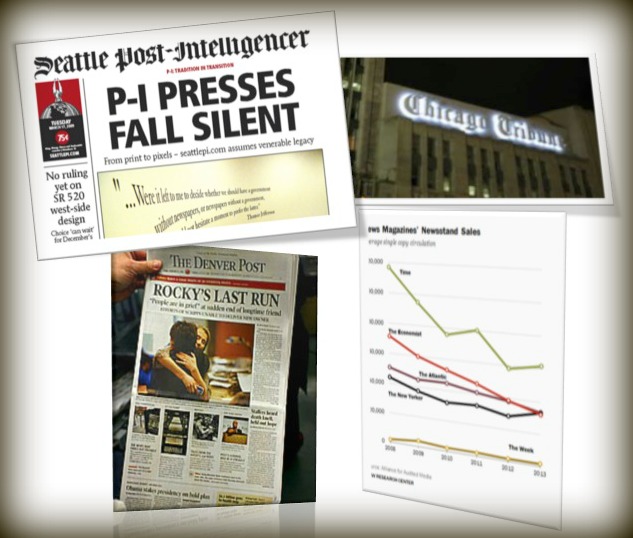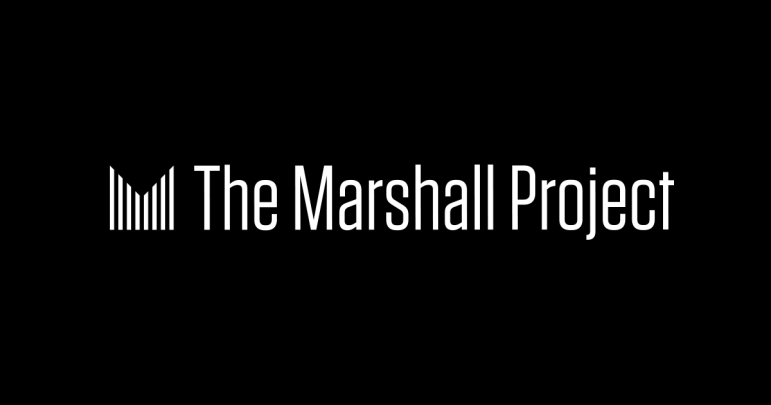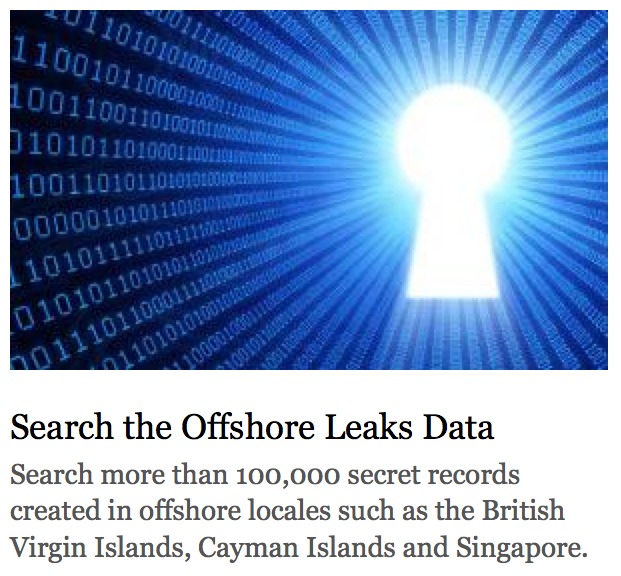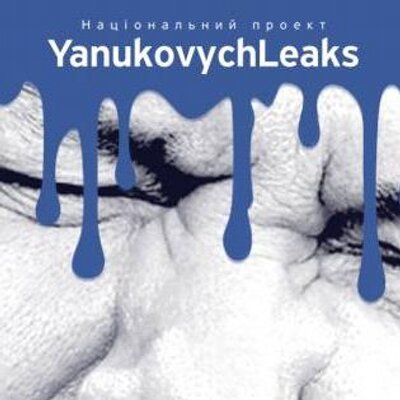 It was February 2009 when veteran investigative journalist Laura Frank lost her job with the closure of the Rocky Mountain News, a newspaper that had served Denver for 150 years. The paper had a stellar reputation, winning four Pulitzer prizes in just the previous decade. Frank had received plaudits for a recent series, “Deadly Denial,” on how former nuclear industry workers were getting turned down for compensation for medical illnesses they contracted while building nuclear weapons. None of that mattered to the parent firm, E. W. Scripps Company. Citing $16 million in losses in the past year, it shut the paper down.
It was February 2009 when veteran investigative journalist Laura Frank lost her job with the closure of the Rocky Mountain News, a newspaper that had served Denver for 150 years. The paper had a stellar reputation, winning four Pulitzer prizes in just the previous decade. Frank had received plaudits for a recent series, “Deadly Denial,” on how former nuclear industry workers were getting turned down for compensation for medical illnesses they contracted while building nuclear weapons. None of that mattered to the parent firm, E. W. Scripps Company. Citing $16 million in losses in the past year, it shut the paper down.
Economic decline triggered by the 2008 recession also led to the closure of the print edition of the Seattle Post-Intelligencer, and other papers entered bankruptcy proceedings. The financial crisis was accelerating the decline of a prime responsibility of the newspaper industry—investigative reporting. Already, and for some time, investigative reporters had experienced layoffs; some also resigned when their organizations closed investigative units and reassigned reporters to other beats. Newsrooms with reputations for award-winning investigations, in Philadelphia, San Jose, Miami, and Los Angeles as well as other metropolitan areas, saw staffs decimated. Consolidation and cutbacks in Washington news bureaus threatened watchdog reporting on the federal government; coverage of state houses across the country was sharply reduced.
A survey that I conducted in 2008 of 20 large to medium size newspapers, as part of my research on the state of investigative journalism, found that half had eliminated or reduced their staffs. Recent surveys by the American Society of News Editors and the Pew Research Center estimated that about 20,000 daily newspaper editorial jobs have been lost—a 36 percent decline since the peak of 56,900 newsroom jobs in 1989. Membership in Investigative Reporters and Editors (IRE), a professional association, dropped from nearly 5,400 in 2003 to 3,700 in 2009.
At the same time, Newsweek and TIME, venerable magazines known for their investigative work, had begun their slide in circulation and reduced their investment in investigative journalism. The situation was not any better in broadcast where many investigative teams were cut and entertainment was substituted for news, both nationally and locally. NBC Dateline’s work became diluted and CBS’s 60 Minutes delivered fewer hard-hitting investigations.
After the closure of the Rocky Mountain News, Frank did some investigative reporting on the newspaper industry itself for the Exposé series produced by the Public Broadcasting Service (PBS). “The Withering Watchdog” found that many newspapers were still actually profitable but were cutting staff and failing to reinvest in operations and training because of pressure from Wall Street to retain high profits.
Nonprofits and Networks
Some investigative journalists took up jobs as investigators for other private and public institutions outside the journalism field. Others like Laura Frank, however, decided to create their own newsrooms, this time as nonprofit businesses that would rely on donations, payments for content from mainstream media, and fundraising events.
One celebrated example is ProPublica, a nonprofit newsroom established in 2007 through a three-year $10 million annual grant from the Sandler banking family. ProPublica’s editorial team is led by the former editor of the Wall Street Journal and a former New York Times investigative editor. In 2010, it became the first online news source to win a Pulitzer Prize, in the category of investigative reporting for an article on a hospital’s operations during Hurricane Katrina. Besides being published at propublica.org, the piece was published by the New York Times Magazine—one of the numerous media organizations with which ProPublica has established collaborations. Besides the funding from the Sandlers, it also receives grants from major foundations that promote civic responsibility.
 Leading the way well before ProPublica entered the scene were two established nonprofit investigative newsrooms, the Center for Investigative Reporting in San Francisco, founded in 1977, and the Center for Public Integrity in Washington, which began work in 1989. They were launched and are sustained primarily with foundation and individual donors although they have earned income from deals with commercial and nonprofit broadcasters. Both have produced investigations that received wide distribution through those partnerships. Journalists such as Frank hoped they could replicate this successful model at the regional and local level.
Leading the way well before ProPublica entered the scene were two established nonprofit investigative newsrooms, the Center for Investigative Reporting in San Francisco, founded in 1977, and the Center for Public Integrity in Washington, which began work in 1989. They were launched and are sustained primarily with foundation and individual donors although they have earned income from deals with commercial and nonprofit broadcasters. Both have produced investigations that received wide distribution through those partnerships. Journalists such as Frank hoped they could replicate this successful model at the regional and local level.
Frank formed her own nonprofit company, the Rocky Mountain Investigative News Network. She raised money from the John S. and James L. Knight Foundation, the largest journalism foundation in the United States, and from the smaller Ethics and Excellence in Journalism Foundation in Oklahoma City. Both foundations would play key roles in the assisting of many new investigative reporting start-ups. With those funds, Frank hired two of her former colleagues while arranging free office space at the nonprofit Rocky Mountain PBS station in exchange for giving the station the results of their investigative work.
In Seattle, journalists from the Post-Intelligencer started Investigate West and also secured offices in the local PBS station. In San Diego, the former editor and metropolitan editor of the San Diego Union Tribune launched The Watchdog Institute, now an online media outlet called inewsource. It found offices in the local PBS station and at San Diego State University.
 In Wisconsin, Illinois, and Massachusetts, journalists began investigative newsrooms at universities, either as a part of journalism departments or under memorandums of understanding. The newsrooms received free space and access to student reporters, while the universities got newsrooms where students could receive professional training and publish their work. Overall, the start-up funding varied from a few thousand dollars to millions a year.
In Wisconsin, Illinois, and Massachusetts, journalists began investigative newsrooms at universities, either as a part of journalism departments or under memorandums of understanding. The newsrooms received free space and access to student reporters, while the universities got newsrooms where students could receive professional training and publish their work. Overall, the start-up funding varied from a few thousand dollars to millions a year.
In July 2009, journalists from the Center for Public Integrity and Center for Investigative Reporting plus some of the newer start-ups met at the Pocantico Center near New York City. They agreed on a declaration of intent to create the Investigative News Network (INN), a North American organization to share business functions, attract funding, and encourage collaborations. Some one hundred organizations are now members of INN. Most produce investigative stories that are shared with hundreds of news organizations. Many of the stories arise out of collaborations between INN members or INN members and mainstream media.
Because of the collaborations and distribution, the investigative projects can achieve considerable reach. A 2010 project on sexual assault on college campuses was guided by the Center for Public Integrity and included National Public Radio and five of the smaller organizations. The series was carried by 49 newspapers and magazines, 56 nonprofit and commercial broadcast outlets, 77 online newsrooms, 60 student newspapers and college-related outlets, and 42 non-government organizations. The spotlight on the issue eventually resulted in congressional legislation, and spawned dozens of follow-up stories.
By 2011, the nonprofits were routinely providing investigative stories and other content not only on their web sites, but also to hundreds of other outlets, including newspapers, TV stations, radio stations, and other online news sites. And new nonprofits continued to spring up. The Pew Research Center reported in 2013 that at least 172 nonprofits had been created since 1987.
One of the latest to launch is the Marshall Project, a newsroom devoted to investigating justice issues and financed by a hedge fund owner and philanthropist, with Bill Keller, a former New York Times executive editor, serving as editor in chief.
Since 2009, many for-profit newsroom editors—some possibly spurred by the determined work of the nonprofit newsrooms—began talking again about investigative reporting being their franchise. Rather than cutting back on their teams they expanded and focused on that work. The Dallas Morning News, Minneapolis Tribune, and the Milwaukee Journal Sentinel were among metropolitan newspapers that maintained or increased the number of their investigative reporters.
 Magazines such as the Atlantic and New Yorker are publishing cutting edge investigative pieces while managing to maintain circulation. Online magazines have also entered the business: BuzzFeed has created an investigative desk and Quartz is publishing investigations.
Magazines such as the Atlantic and New Yorker are publishing cutting edge investigative pieces while managing to maintain circulation. Online magazines have also entered the business: BuzzFeed has created an investigative desk and Quartz is publishing investigations.
In television and video, Vice News started in December 2013 with provocative short video pieces and documentaries. Mother Jones, which broke one of the major stories of the 2012 U.S. presidential election—a video that caught Republican candidate Mitt Romney expressing disdain for Democrats as voters who pay no taxes and think government must take care of them—may provide a model for the future of investigative reporting. It is a nonprofit publication still in business after nearly forty years. It survives by receiving donations from individuals, foundation grants for special projects, and from selling advertising in its magazine.
Investigating the World

More than 100 investigative journalism nonprofits have appeared worldwide over past 15 years.
During the first decade of the 21st century, another transformation began in Europe and spread to other continents. In 2001, American and Danish journalists held the first ever Global Investigative Journalism Conference, in Copenhagen. (I was one of the two creators of the conference.) The conference, modeled on the IRE annual conference, allowed journalists to share practical methods and tips on investigative and computer-assisted reporting for four days.
Exceeding organizers’ expectations, more than 400 journalists from 40 countries attended. One reason was that international journalists were seeking ideas on how to create independent investigative newsrooms because they had few opportunities to do investigations due to limited resources or corrupt owners.
At the next global conference in 2003, the concept of a network of nonprofit newsrooms that would share information and collaborate on cross-border stories had emerged and the Global Investigative Journalism Network was created. The network has held conferences every two years. It now numbers more than 100 member organizations—some of which also have membership in the Investigative News Network—and held the first Asian investigative reporting conference last November. The global network has spawned numerous collaborations, especially into corruption in eastern Europe. The Organized Crime and Corruption Reporting Project based in Sarajevo has overseen cross-border investigations with other groups into human trafficking, money laundering, and the drug trade. Connectas in Latin America is another collaboration of nonprofit newsrooms that is tracking corruption across borders.
Both in the United States and internationally, a parallel movement in the use of data for investigations is spurring the creation of small online newsrooms and investigations. The movement had begun in earnest in the 1980s in the United States and reached wide acceptance there by the late 1990s. Known as computer-assisted reporting or later, data-driven journalism, the methodology produced more credible stories that simply could not have been done before because of the enormous amount of records that could be examined.
 It also meant a small team could have much higher impact using the data and working with others. And the use of data analysis in journalism also has drawn a new generation of reporters from the computer sciences. The data greatly aided cross-border investigations because data and data analysis can be easily shared. Traditional journalists are still slow to use digital techniques, but much progress has been made; more than a thousand journalists attended an annual computer-assisted reporting conference in the United States last year, nearly double the highest previous number. A decade of training of European journalists by data journalism specialists from the United States has borne fruit, with papers like the Guardian producing exemplary investigative work that routinely includes data analysis and data visualization. An early high point was the Guardian’s reporting and analysis of race riots in cities in the United Kingdom. The Guardian not only did traditional reporting but used social science methods to examine the use of social media by rioters and their economic and ethnic status.
It also meant a small team could have much higher impact using the data and working with others. And the use of data analysis in journalism also has drawn a new generation of reporters from the computer sciences. The data greatly aided cross-border investigations because data and data analysis can be easily shared. Traditional journalists are still slow to use digital techniques, but much progress has been made; more than a thousand journalists attended an annual computer-assisted reporting conference in the United States last year, nearly double the highest previous number. A decade of training of European journalists by data journalism specialists from the United States has borne fruit, with papers like the Guardian producing exemplary investigative work that routinely includes data analysis and data visualization. An early high point was the Guardian’s reporting and analysis of race riots in cities in the United Kingdom. The Guardian not only did traditional reporting but used social science methods to examine the use of social media by rioters and their economic and ethnic status.
The WikiLeaks organization, meanwhile, capitalized on the “data dump” to obtain U.S. government secrets—in the form of classified military and diplomatic reports and cables—and disseminate them via its own website and partner news organizations around the world. Initially, WikiLeaks believed the general public would review its data, discover wrongdoing, and report on it. But it quickly became apparent that linking up with journalists practiced in the ways of investigative reporting—interviewing, on the ground reporting, fact-checking, etc.—was critical to producing credible stories.
 A second data dump of documents on off-shore companies that hide money and avoid taxes was obtained by the International Consortium for Investigative Journalists, a part of the Center for Public Integrity. Known as “Offshore Secrets,” the project used the leak of millions of confidential bank records to write stories that involved reporters in fifty-eight countries.
A second data dump of documents on off-shore companies that hide money and avoid taxes was obtained by the International Consortium for Investigative Journalists, a part of the Center for Public Integrity. Known as “Offshore Secrets,” the project used the leak of millions of confidential bank records to write stories that involved reporters in fifty-eight countries.
Another well-known data dump came from National Security Agency (NSA) employee Edward Snowden, whose leaks of NSA documents indicated widespread illegal domestic spying. He went to documentary filmmaker Laura Poitras and Guardian columnist Glenn Greenwald as well as Washington Post reporter Barton Gellman. The work of Poitras and Greenwald attracted the notice of Ebay founder Pierre Omidyar, whose interest in public accountability had already prompted him to launch a digital media outlet in Hawaii. Omidyar decided to finance the creation of an international online news organization, First Look Media. In its initial months of operation, First Look has focused on abuses by intelligence and national security agencies, invasion of digital privacy by governments, and surveillance of the Muslim community in the United States. It also has produced social justice stories—such as analysis of the shooting of black youth Michael Brown in Ferguson, Missouri, and the racism in that city—and criticism of mainstream media coverage of national security issues.
Paying for Public Accountability
Despite the rise in nonprofit journalism and the resurgence of investigative reporting in some mainstream newsrooms, the conundrum of paying for it remains. In his 2006 book, All the News That’s Fit to Sell: How the Market Transforms Information into News, economist James Hamilton pointed out that the public at large has never been willing to directly pay for public interest journalism. Instead, advertising generally paid for it over the years. Given that losses in advertising range into the billions of dollars—down 49 percent at American newspapers from 2003 to 2013—and donations to nonprofits remain in the hundreds of millions, the challenges are large.
Currently, most funding for nonprofit news in the United States comes from foundations and private donors, and internationally it comes from foundations and governments, particularly from Scandinavian countries and the U.S. Agency for International Development. Successes with earned income from training, events, and syndication are spotty although the Texas Tribune has been a leader in creating new revenue streams through sponsored public engagement events, individual donations, and data sales. Thus, in just a few short years it now relies on foundations for only a third of its funding. But the Pew Research Center continues to report a heavy reliance by nonprofits on foundations, which appear to be shifting their focus on how to improve democracy in the United States. The foundations also have pushed for the nonprofits to become more independent, more business-oriented, and less reliant on their continued funding. Internationally, funding remains a deep problem although the Open Society Foundations, the Konrad Adenauer Stiftung, and Adessium Foundation are still strong supporters of investigative centers and conferences.
As Drew Sullivan of the Organized Crime and Corruption Reporting Project wrote in a paper in 2013, “Investigative Reporting in Emerging Democracies: Models, Challenges, and Lessons Learned,” the obstacles to investigative reporting include not only safety and professionalism issues, but also poor financial support and a culture gap between journalists and funders. David Kaplan, executive director of the Global Investigative Journalism Network, has written extensively about the lack of sufficient funding for investigative reporting throughout the world. In a recent global network project supported by Google Ideas, “Investigative Impact: The Case for Global Muckraking,” Kaplan and GIJN cite ten case studies, several done by nonprofits. In one of them, “YanukovychLeaks,” reporters used divers to retrieve documents thrown into a lake next to the Ukraine presidential palace; the dried documents provided a look into billions of dollars of looted wealth.
 GIJN also cited investigations into the killing of disabled children in Ghana, the corruption of a Philippine president, how 70 percent of Pakistan’s parliamentary members do not pay taxes, and hundreds of needless neo-natal deaths at a city hospital in South Africa.
GIJN also cited investigations into the killing of disabled children in Ghana, the corruption of a Philippine president, how 70 percent of Pakistan’s parliamentary members do not pay taxes, and hundreds of needless neo-natal deaths at a city hospital in South Africa.
But, as Kaplan noted in a previous 2013 report, “despite its frontline role in fostering accountability, battling corruption, and raising media standards, investigative reporting receives relatively little support—about 2 percent of global media development funding by major donors.” He also has found, as has the Pew Research Center, that “few nonprofit investigative journalism organizations, particularly reporting centers, have adequate sustainability plans. To survive in a competitive and poorly funded environment, many will need to diversify and become more entrepreneurial, drawing revenue from various sources and activities.”
The work of Laura Frank, meanwhile, reflects the evolution of nonprofit newsrooms. In 2013, she merged her I-News group with Rocky Mountain PBS and a public radio station, and entered into collaborative agreements with several other radio newsrooms and a commercial TV station. Within a year, she became president and general manager of news for the PBS station. With additional funding from the station and the Corporation for Public Broadcasting, she expanded the editing and reporting staff and produced such stories as “Losing Ground,” which examined the deep disparity in economic and living conditions between Hispanics and whites in Colorado.
By partnering with PBS, Frank won a major increase in her audience—the station’s 65,000 contributing members. She also acquired an experienced fundraising team. In an interview in 2013 with the American Journalism Review, Frank said: “The greatest value is being able to sustain in-depth public service journalism, because we have the infrastructure to do that. Investigative reporting is expensive and risky. Being able to merge with an organization that has the infrastructure in place, and you bring in the journalism and an injection of energy, and it’s sort of a perfect marriage.”
This story was originally published as Watchdogs Unleashed by the Cairo Review of Global Affairs and is reprinted with permission.
 Brant Houston (@branthouston) is the Knight Chair in Investigative Reporting at the University of Illinois at Urbana-Champaign. He is board chair of the Global Investigative Journalism Network and oversees the community news project CU-CitizenAccess.org. From 1997 to 2007, he served as executive director of IRE. He is author of the newly revised Computer-Assisted Reporting.
Brant Houston (@branthouston) is the Knight Chair in Investigative Reporting at the University of Illinois at Urbana-Champaign. He is board chair of the Global Investigative Journalism Network and oversees the community news project CU-CitizenAccess.org. From 1997 to 2007, he served as executive director of IRE. He is author of the newly revised Computer-Assisted Reporting.

